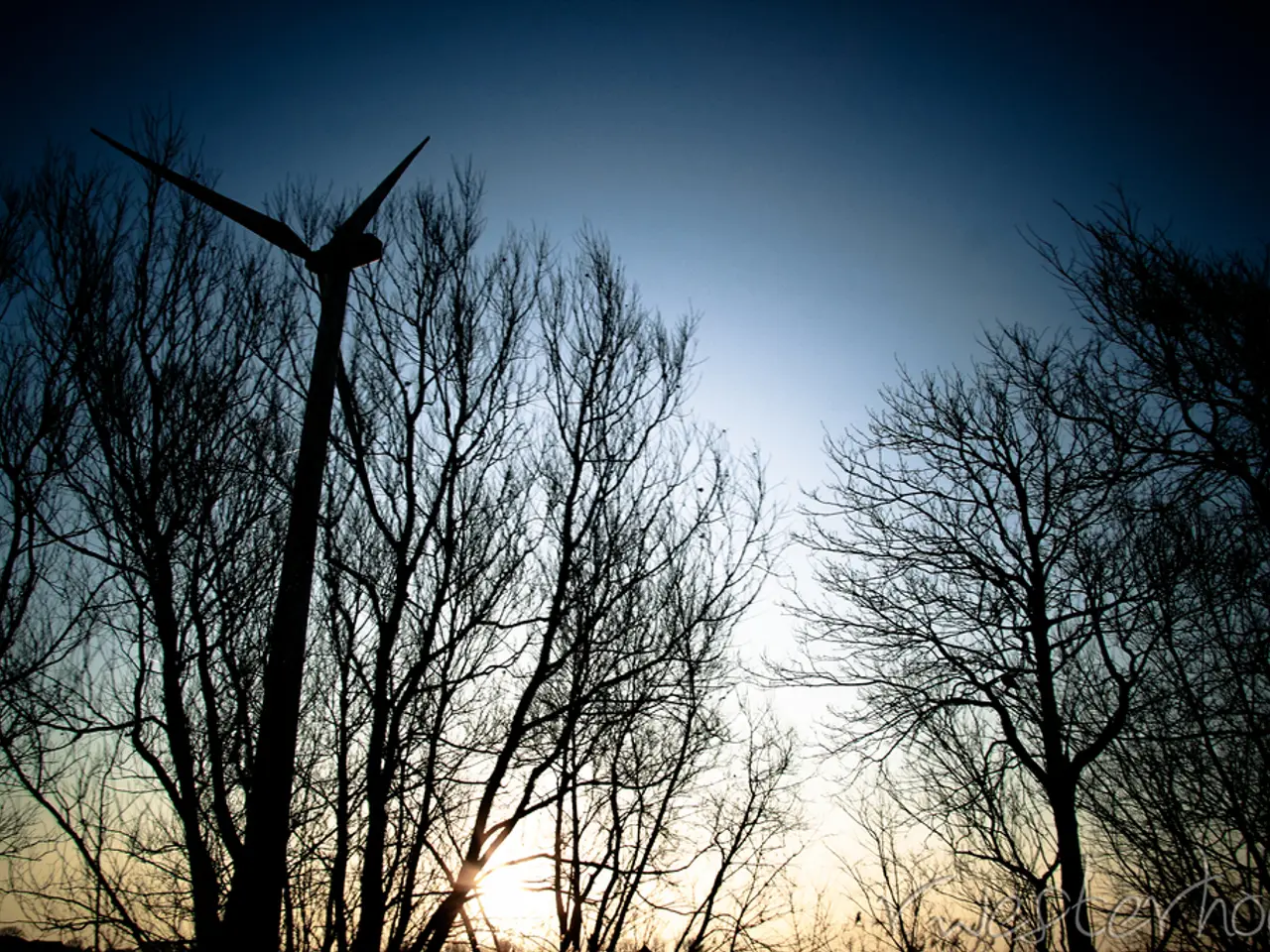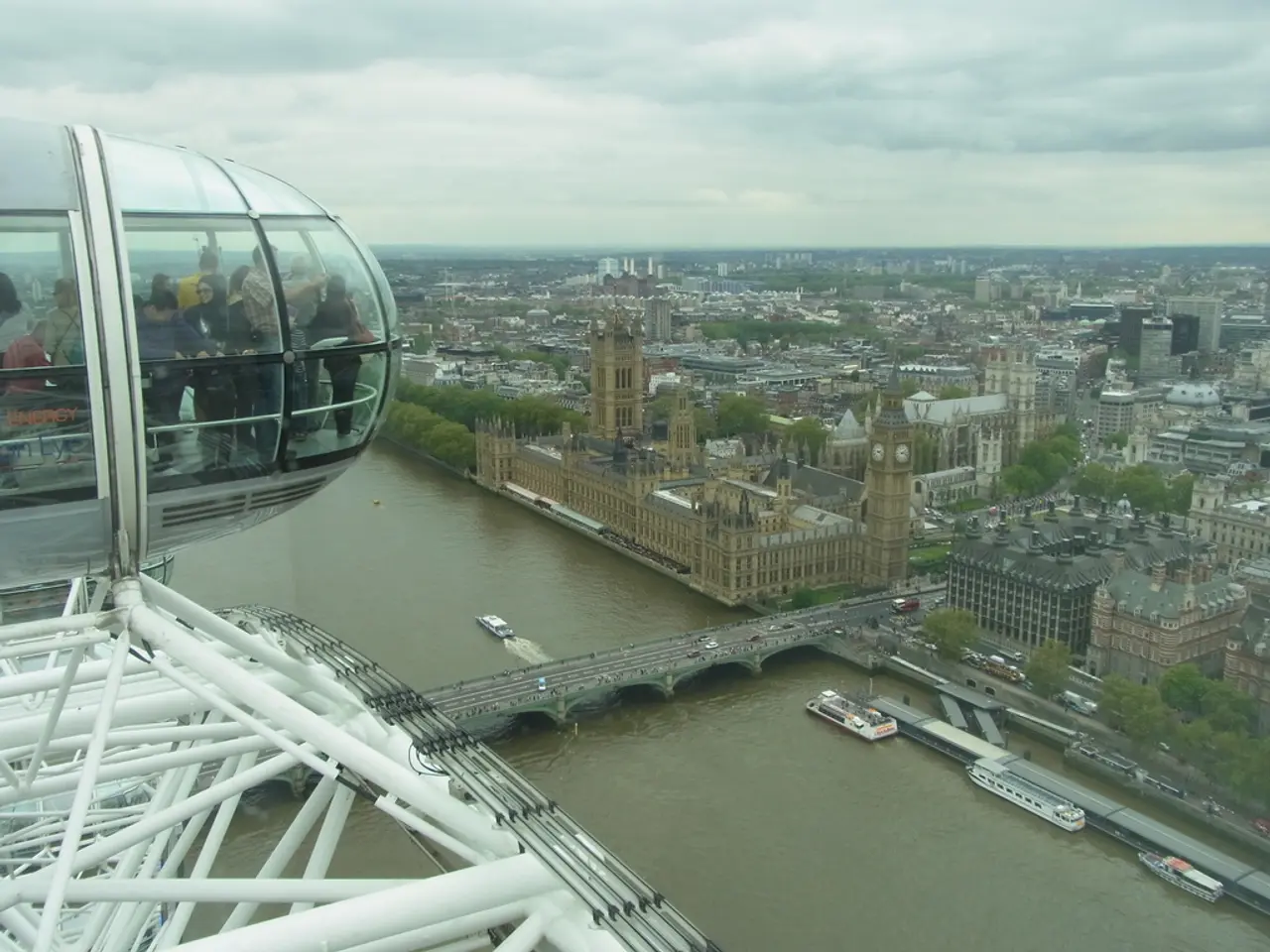Dutch Government Reduces 2040 Renewable Energy Target | '50 Gigawatts Overambitious and Uncalled For'
In a significant shift, the Dutch government has adjusted its offshore wind energy target for 2040 under the North Sea Wind Energy Infrastructure Plan (WIN). The new target now ranges from 30 GW to 40 GW, marking a reduction from the original goal of 50 GW[1][2][3].
Dutch Minister for Climate and Green Growth, Sophie Hermans, presented the WIN plan to Parliament, citing challenges such as rising construction costs, high interest rates, and a slower-than-expected transition of heavy industry to renewable energy sources as reasons for the adjustment[2][3].
The revised target reflects a more cautious approach, aiming to balance ambitions with practical challenges. This shift could lead to a ripple effect within the North Seas Energy Cooperation, an initiative involving several European countries aiming to enhance collaboration on offshore wind energy[4].
While the revised Dutch targets do not directly alter the overall regional goals, they could influence the collective ambition and strategy of the cooperation. For instance, Scotland is considering increasing its offshore wind targets to up to 40 GW by 2040, highlighting the complexity and variability in national strategies within the broader context of North Seas energy cooperation[4].
The Netherlands has committed to 193 GW of wind energy capacity by 2040 and 260 GW by 2050 through the North Seas Energy Cooperation and the Ostend Declaration. However, the previously planned 50 GW of wind energy in 2040 could jeopardize the 70 GW target for 2050, according to Dutch industry organisation NedZero[1].
NedZero has expressed concern about the Netherlands' credibility at the European level due to potential underachievement of joint wind energy capacity targets. Jan Vos, chairman of NedZero, stated that the current approach will not achieve climate goals and that the Netherlands will continue developing wind energy as planned until 2032[1].
The new plan and Climate and Energy Memorandum, to be released and signed in September, are expected to set the target at 30-40 GW. The Netherlands will still maintain its 21 GW goal for the near term. The country's first wind energy roadmap, created following the Dutch Energy Agreement, set a goal of 4.5 GW of installed capacity by the end of 2023, which was exceeded with 4.7 GW up and running in the North Sea in December 2023[5].
Despite the revised target, the government plans to develop 30-40 GW of wind energy after 2032. However, the rate of development will be limited, with a maximum of 4 GW of electrical infrastructure able to be developed per year, according to the Ministry of Climate and Green Growth[6]. This will not be possible every year due to supply chain constraints.
The costs of constructing wind farms have risen, partly due to higher prices for materials and increased interest rates[3]. The newly introduced WIN plan is a building block for the next phase of the Netherlands' Wind Energy Roadmap after the 21 GW target has been achieved.
In conclusion, the adjustment in the Dutch target underscores the need for adaptive strategies in the energy transition, reflecting both technological feasibility and economic realities. This shift could lead to a more cautious approach in the region as countries balance their ambitions with practical challenges.
[1] https://www.offshorewind.biz/news/16516-netherlands-reduces-offshore-wind-target-to-30-40-gw-by-2040 [2] https://www.rechargenews.com/wind/europe/netherlands-cuts-offshore-wind-goal-for-2040-as-costs-rise/2-1-780489 [3] https://www.reuters.com/business/energy/netherlands-cuts-offshore-wind-target-due-higher-costs-slower-industrial-transition-2021-06-08/ [4] https://www.reuters.com/business/energy/netherlands-cuts-offshore-wind-target-due-higher-costs-slower-industrial-transition-2021-06-08/ [5] https://www.reuters.com/business/energy/netherlands-cuts-offshore-wind-target-due-higher-costs-slower-industrial-transition-2021-06-08/ [6] https://www.reuters.com/business/energy/netherlands-cuts-offshore-wind-target-due-higher-costs-slower-industrial-transition-2021-06-08/
- The Dutch government has revised its offshore wind energy target for 2040, citing rising construction costs, high interest rates, and slower-than-expected industrial transition to renewable energy sources as reasons.
- The Netherlands will develop 30-40 GW of wind energy after 2032, but the rate of development will be limited due to supply chain constraints and economic realities.
- The adjustment in the Dutch target underscores the need for adaptive strategies in the energy transition, influencing the collective ambition and strategy of regional collaborations like the North Seas Energy Cooperation.
- Investment in renewable energy, especially offshore wind, is influenced by factors such as market fluctuations, climate-change policies, and technological advancements in environmental science and finance.
- The Dutch industry organisation NedZero has expressed concern about the Netherlands' credibility at the European level due to potential underachievement of joint wind energy capacity targets, emphasizing the importance of consistent and ambitious investment in renewable energy sources like wind energy within the industry.




